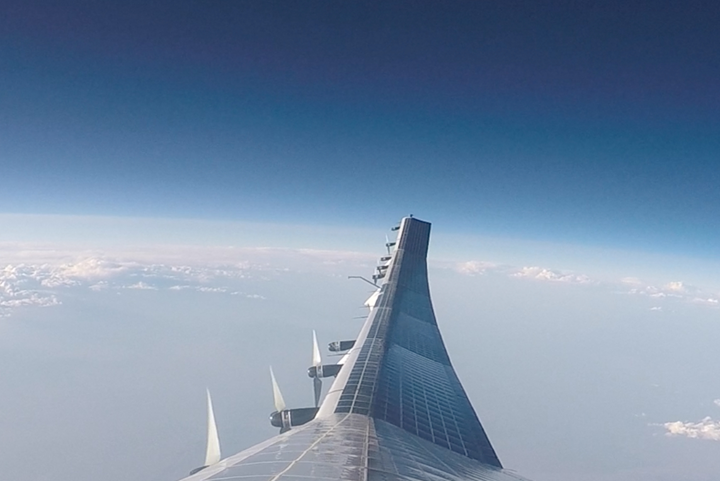AeroVironment completes successful Sunglider HAPS stratospheric test flight
During the 20-hour test flight, the solar-powered high-altitude pseudo-sattelite (HAPS) surpassed 60,000 feet in altitude and demonstrated broadband mobile connectivity.

Photo Credit: AeroVironment
AeroVironment, Inc. (Simi Valley, Calif., U.S.) a global leader in unmanned aircraft systems (UAS), announced on Oct. 7 that the Sunglider, a solar-powered high-altitude pseudo-satellite (HAPS) that incorporates composites, achieved key test milestones, including reaching an altitude of more than 60,000 feet above sea level and successfully demonstrating mobile broadband communication. Sunglider’s development and testing is funded by HAPSMobile Inc., a joint venture majority-owned by SoftBank Corp. (Tokoyo, Japan) and minority-owned by AeroVironment.
During the test flight, which began at 5:16 a.m. MDT on Sept. 21 and concluded at 1:32 a.m. MDT on Sept. 22, the AeroVironment team piloted Sunglider to a stratospheric altitude of 62,500 feet above Spaceport America in New Mexico. Sunglider reported successfully achieved major test objectives relating to propulsion, power systems, flight control, navigation and datalink integrity, as well as structural performance during the most turbulent phases of the flight as it entered and exited the jet stream.
According to the company, the broadband communication demonstration successfully linked teams in Tokyo, Spaceport America and Silicon Valley using an LTE payload jointly developed by Alphabet’s Loon LLC (Mountain View, Calif., U.S.) and HAPSMobile. Employing standard LTE smartphones, a team at Spaceport America conducted multiple video calls via the Sunglider’s payload while the aircraft circled for more than five hours in the stratosphere.
“In less than three years AeroVironment and HAPSMobile have made incredible progress, developing two Sunglider solar HAPS unmanned aircraft and performing five consecutive flight demonstrations, culminating in this latest significant milestone,” says Wahid Nawabi, president and CEO of AeroVironment. “Reaching stratospheric altitude, maintaining continuous flight for more than 20 hours, achieving key test objectives and demonstrating seamless broadband communication illustrate the tremendous potential HAPS technology offers to expand connectivity globally. We look forward to maintaining our momentum toward aircraft certification and commercialization, working in close partnership with HAPSMobile as we establish a disruptive capability that offers tremendous value creation potential.”
The Sunglider, a solar-powered HAPS, has a wingspan of 262 feet and is propelled by 10 electric motors powered by solar panels covering the surface of the wing and rechargeable battery packs, resulting in zero emissions. Flying at an altitude of approximately 65,000 feet above sea level and above the clouds, the Sunglider can carry payloads weighing as much as 150 pounds and is designed for continuous, extended missions of months without landing.
Below is the footage from the Sunglider’s test flight.
Related Content
-
Plant tour: BeSpline/Addcomp, Sherbrooke, QC, Canada
Composites automation specialist increases access to next-gen technologies, including novel AFP systems and unique 3D parts using adaptive molds.
-
Carbon fiber, bionic design achieve peak performance in race-ready production vehicle
Porsche worked with Action Composites to design and manufacture an innovative carbon fiber safety cage option to lightweight one of its series race vehicles, built in a one-shot compression molding process.
-
Optimized approach to predict delamination failure in CFRTP structures
ARRK Engineering and Mitsui Chemicals improved delamination prediction accuracy to help optimize absorbed energy/failure load for an overmolded TAFNEX CF/PP UD tape bumper beam.















